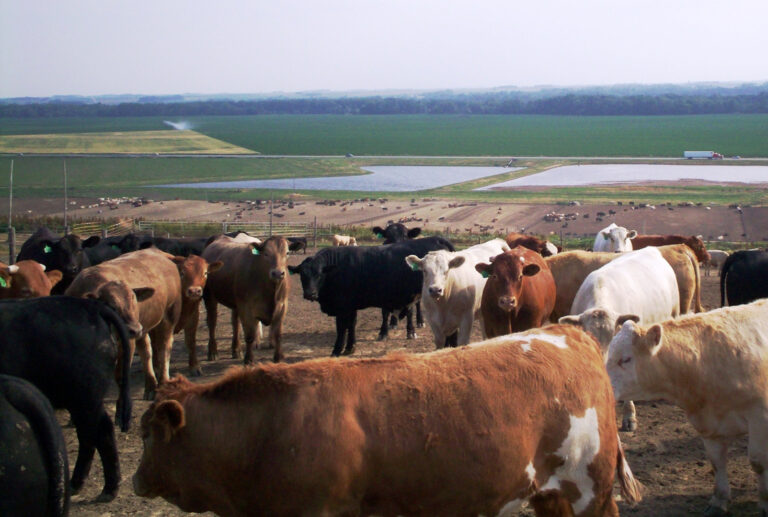It’s never been a better time to sell manure.
“We have been inundated with calls,” said Andy Scholting, president and co-founder of Nutrient Advisors, a Nebraskan manure broker. “We’ve certainly never seen so much demand for manure fertilizer.”
Farmers are blowing up the office’s phones, hoping to find an alternative to expensive synthetic fertilizers. Prices for the nutrients that crops need have nearly doubled from a year ago. The high costs have many farmers wondering how they’ll break even this season.
For the first time ever, Scholting said he’s taking orders faster than the cows and poultry can produce his product. He’s pre-sold manure as far into winter 2023.
Bob Schulte farms in central Nebraska and has opted for manure to skirt skyrocketing fertilizer prices. He’s using manure as a starter fertilizer for his crops and said he thinks it will give his fields even more of a boost than a synthetic product.
“Manure will probably be better than fertilizer because it has more organic material in it, and also more copper and trace elements,” he said. “It’s probably even more beneficial than the expensive stuff.”
It offers many of the same benefits as synthetic fertilizer at a fraction of the cost. Scholting called it a “multivitamin for crops.”
“Manure is really the smorgasbord of nutrients,” he said. “You’re not buying just nitrogen or just phosphorus, you’re buying a whole package for crops.”
Organic and small-scale farmers have long used manure to nourish their fields, but the interest this year includes big commodity farmers looking for ways to cut back on their need for synthetic nutrients.
“I would say the new demand is largely commercial grain farmers looking for an alternative to expensive commercial fertilizer,” Scholting said. “Most of the new demand is a direct replacement for commercial fertilizer.”
But getting manure on crop land isn’t a snap decision, according to Daniel Andersen, a professor and extension agent at Iowa State University who specializes in manure management.
Most states require a manure plan, which mandates soil sampling to assess a field’s needs and risks. Farmers have to consider how variables like weather and application could change manure’s potency on the soil.
Transporting manure can also be a logistical challenge – an acre needs tons of manure instead of pounds of synthetic fertilizer. Instead of one semi-truck hauling a farmer’s fertilizer, they might see hundreds of semis lined up next to their fields.
“So it’s not an instantaneous, ‘Well, I’d like to move to manure today,’” Andersen said. “It’s something that takes a little time to set up.”
And it’s taking increasing amounts of money to get the stuff. In Iowa, Andersen said the value of swine manure is now $80 per 1,000 gallons, up from $30. And poultry manure is at $50 per 1,000 gallons, up from $30.
Even with high fertilizer prices driving new interest in manure, it can’t completely replace synthetic fertilizers. One study found that without nitrogen fertilizer, farmers around the world would only be able to support half of the global population.
Still, Scholting said he’d bet the manure mania has sticking power even if commercial fertilizer prices relent. First-time manure applications can boost harvests by up to 20%.
“When a farmer uses manure for the first time, it really opens his eyes up to what his soil is capable of producing,” he said. “If the market does stabilize a little bit, probably some of the craziest demand is going to go away. But I do think we’ll have more customers than ever interested and wanting manure for the long term because of this.”
Follow Elizabeth on Twitter: @Ekrembert
This story was produced in partnership with Harvest Public Media, a collaboration of public media newsrooms in the Midwest. It reports on food systems, agriculture and rural issues. Follow Harvest on Twitter: @HarvestPM.
9(MDM5MjE5NTg1MDE1Mjk1MTM5NjlkMzI1ZQ000))

